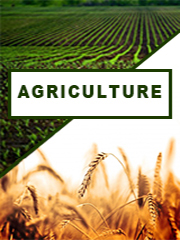Report overview
Prime agricultural land can be scarce and expensive. With worldwide population growth, the demand for both more food and more land to grow food is ever increasing. One solution to our need for more space is vertical farming, involves growing crops in controlled Vegetable Cultivation environments, with precise light, nutrients, and temperatures. In vertical farming, growing plants are stacked in layers that may reach several stories tall.
This report aims to provide a comprehensive presentation of the global market for Vertical Farming, with both quantitative and qualitative analysis, to help readers develop business/growth strategies, assess the market competitive situation, analyze their position in the current marketplace, and make informed business decisions regarding Vertical Farming. This report contains market size and forecasts of Vertical Farming in global, including the following market information:
Global Vertical Farming Market Revenue, 2018-2023, 2024-2029, ($ millions)
Global Vertical Farming Market Sales, 2018-2023, 2024-2029, (K MT)
Global top five Vertical Farming companies in 2022 (%)
The global Vertical Farming market was valued at US$ 5863 million in 2022 and is projected to reach US$ 57510 million by 2029, at a CAGR of 38.6% during the forecast period. The influence of COVID-19 and the Russia-Ukraine War were considered while estimating market sizes.
The major players in global Vertical Farming market include AeroFarms, Gotham Greens, Plenty (Bright Farms) , etc. North America and Europe are main markets, they occupy about 80% of the global market. Hydroponics is the main type, with a share about 90%. Vegetable Cultivation is the main application, which holds a share about 85%.
We surveyed the Vertical Farming manufacturers, suppliers, distributors and industry experts on this industry, involving the sales, revenue, demand, price change, product type, recent development and plan, industry trends, drivers, challenges, obstacles, and potential risks.
Total Market by Segment:
Global Vertical Farming Market, by Type, 2018-2023, 2024-2029 ($ Millions) & (K MT)
Global Vertical Farming Market Segment Percentages, by Type, 2022 (%)
Hydroponics
Aeroponics
Others
Global Vertical Farming Market, by Application, 2018-2023, 2024-2029 ($ Millions) & (K MT)
Global Vertical Farming Market Segment Percentages, by Application, 2022 (%)
Vegetable Cultivation
Fruit Planting
Others
Global Vertical Farming Market, By Region and Country, 2018-2023, 2024-2029 ($ Millions) & (K MT)
Global Vertical Farming Market Segment Percentages, By Region and Country, 2022 (%)
North America
US
Canada
Mexico
Europe
Germany
France
U.K.
Italy
Russia
Nordic Countries
Benelux
Rest of Europe
Asia
China
Japan
South Korea
Southeast Asia
India
Rest of Asia
South America
Brazil
Argentina
Rest of South America
Middle East & Africa
Turkey
Israel
Saudi Arabia
UAE
Rest of Middle East & Africa
Competitor Analysis
The report also provides analysis of leading market participants including:
Key companies Vertical Farming revenues in global market, 2018-2023 (Estimated), ($ millions)
Key companies Vertical Farming revenues share in global market, 2022 (%)
Key companies Vertical Farming sales in global market, 2018-2023 (Estimated), (K MT)
Key companies Vertical Farming sales share in global market, 2022 (%)
Further, the report presents profiles of competitors in the market, key players include:
AeroFarms
Gotham Greens
Plenty (Bright Farms)
Lufa Farms
Beijing IEDA Protected Horticulture
Green Sense Farms
Garden Fresh Farms
Mirai
Sky Vegetables
TruLeaf
Urban Crops
Sky Greens
GreenLand
Scatil
Jingpeng
Metropolis Farms
Plantagon
Spread
Sanan Sino Science
Nongzhong Wulian
Vertical Harvest
Infinite Harvest
FarmedHere
Metro Farms
Green Spirit Farms
Indoor Harvest
Sundrop Farms
Alegria Fresh
Farmbox
Greener Roots Farm
Outline of Major Chapters:
Chapter 1: Introduces the definition of Vertical Farming, market overview.
Chapter 2: Global Vertical Farming market size in revenue and volume.
Chapter 3: Detailed analysis of Vertical Farming manufacturers competitive landscape, price, sales and revenue market share, latest development plan, merger, and acquisition information, etc.
Chapter 4: Provides the analysis of various market segments by type, covering the market size and development potential of each market segment, to help readers find the blue ocean market in different market segments.
Chapter 5: Provides the analysis of various market segments by application, covering the market size and development potential of each market segment, to help readers find the blue ocean market in different downstream markets.
Chapter 6: Sales of Vertical Farming in regional level and country level. It provides a quantitative analysis of the market size and development potential of each region and its main countries and introduces the market development, future development prospects, market space of each country in the world.
Chapter 7: Provides profiles of key players, introducing the basic situation of the main companies in the market in detail, including product sales, revenue, price, gross margin, product introduction, recent development, etc.
Chapter 8: Global Vertical Farming capacity by region & country.
Chapter 9: Introduces the market dynamics, latest developments of the market, the driving factors and restrictive factors of the market, the challenges and risks faced by manufacturers in the industry, and the analysis of relevant policies in the industry.
Chapter 10: Analysis of industrial chain, including the upstream and downstream of the industry.
Chapter 11: The main points and conclusions of the report.
